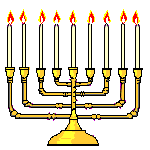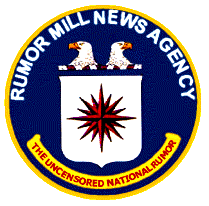The parallels between then and now are striking, to say the least. The fact that the anti-Bolshevik forces were labeled the Whites is eerie, given how the leftists in the U.S. have have been heavily promoting their anti-White propaganda on the population.
THE RUSSIAN CIVIL WAR
Alpha History
https://alphahistory.com/russianrevolution/russian-civil-war/
The Russian Civil War (1918-21) was fought to decide who should control Russia in the wake of the October 1917 revolution. During this period a conglomerate of anti-Bolshevik groups, dubbed the Whites, fought to remove the Bolsheviks from power and restore some elements of the old order. Other groups not directly aligned with the Bolsheviks or the Whites fought for independence or control of their own regions.
The Russian Civil War was a pervasive conflict, drawing in many disparate political and military groups, nationalist movements and all classes of Russian society. Several foreign nations, most of whom opposed Bolshevik government in Russia, also contributed troops, weapons, supplies and intelligence to warring parties. Like most other internecine conflicts the Russian Civil War produced confusion, division, attack and retaliation, intense propaganda, war crimes and human suffering on catastrophic levels.
The Russian Civil War emerged from strong and widespread resistance to the new Bolshevik order. Opposition to the Bolsheviks after the October 1917 was pronounced, however in early 1918 this opposition began to strengthen and intensify into a counter-revolutionary movement. Tsarists, liberals, Mensheviks and SRs alike believed the Bolsheviks were usurpers who had stolen power, despite their grandiose claims that they represented the working classes.
The catalyst for the outbreak of civil war was an uprising by the Czech Legion. A Russian Imperial Army unit, the Czech Legion contained volunteers of Czech and Slovak heritage who enlisted to defend their homeland during World War I. By May 1918 the Legion was distributed along the Trans-Siberian Railway but found itself unable to move, due to transport shortages and Bolshevik red tape. Tensions between Czech Legion soldiers and Bolshevik officials began to escalate. On May 14th the Legion began to rebel, killing several Bolsheviks and seizing control of Chelyabinsk, a town not far south of Ekaterinburg, where the former tsar and his family were being held.
Over the coming weeks the Czech Legion continued its revolt against Bolshevik authority, seizing control of towns and stations along the Trans-Siberian Railway. They were joined by other aggrieved groups, particularly former tsarist officers and loyalist militias. By the end of June 1918 the counter-revolutionaries controlled most of the railway, and with it all of Siberia. Behind the White armies emerged a political movement, a loose coalition of anti-Bolsheviks comprised of monarchists, liberals, non-Bolshevik socialists and disgruntled peasants.
These groups had very few shared values or objectives, other than their opposition to the Bolsheviks and their determination to overthrow the Soviet regime. Most White leaders were nationalist and imperialist: they wanted to retain the Russian Empire and restore it to a position of strength in Europe and Asia. Beyond that, however, they had little in common politically. They had no system of government in mind, no agreed foreign policy, no single leader or leadership group. Some wanted the tsar restored; some wanted a constitutional monarchy; some wanted a republic; some expressed no views on the matter.
Together this broad and eclectic movement became known as the Whites. As one might expect, their biggest problems were division, disunity and a lack of leadership and coordination. Separate White armies were formed under the command of General Kornilov, General Denikin and Admiral Kolchak – all former military commanders of the tsarist regime. Kornilov’s army, also referred to as the Volunteer Army, was the largest of these. Foreign powers also intervened to bring about the collapse of Bolshevism.
With the signing of the Treaty of Brest-Litovsk in March 1918, the Bolsheviks appeared not only as traitors to the war cause, but an ideological threat to democratic, capitalist nations. Most foreign powers refused to recognise the legitimacy of the Bolshevik regime, dealing instead with White generals in exile. British, French and American units were all sent to various Russian ports to support White forces, while Japanese troops invaded in the east. Foreign military intervention was lukewarm at best; rarely did foreign units directly engage the Bolsheviks on their own. Some foreign powers were chiefly interested in protecting resources previously lent to Russia. By late 1918 World War I had come to an end and nobody wanted to commit large troop numbers to another major conflict. As a consequence, foreign troops began withdrawing from Russia in 1919.
The Bolshevik victory in the Russian Civil War can be attributed to several factors. The White armies fought as separate units and for the most part were unable or unwilling to coordinate their strategy or offensives. They were geographically scattered around Russia and not often able to combine their forces in sufficient numbers to push back the Red Army. The Whites were politically divided and not particularly well led; the only common view all Whites shared was opposition to the Bolshevik regime. The Whites also lost important generals at important times: Kornilov was killed in battle in March 1918 and Kolchak was captured and executed in January 1920.
In contrast to White forces, the Red Army was strongly disciplined and contained five million soldiers at its peak. The Bolsheviks and Soviets also maintained control of Russia’s industrial heartland, most of its major cities, its significant ports and railways; this gave them access to infrastructure, communications and supply lines. The Bolshevik propaganda campaign was also more successful, promoting a White victory as a return to the ‘old Russia’ – a prospect that terrified most Russians. Further, when administering the regions they controlled the Whites often resorted to similar methods employed by the Bolsheviks: conscription, grain requisitioning, coercion and terror. The Whites failed to win sufficient support from the Russian people and could not present themselves as an alternative to the Soviet regime.






































